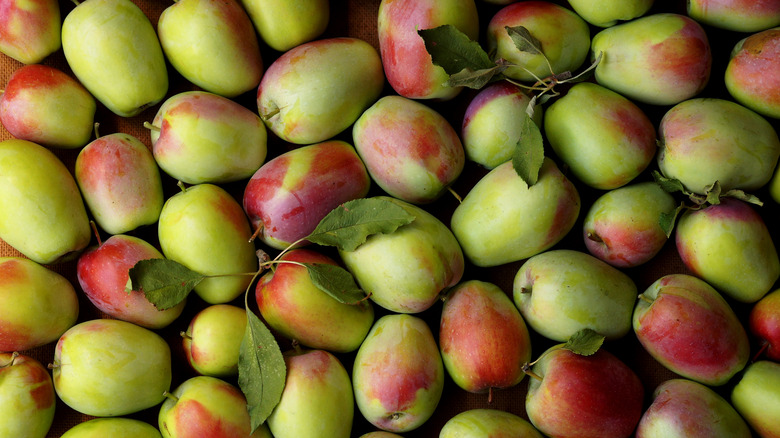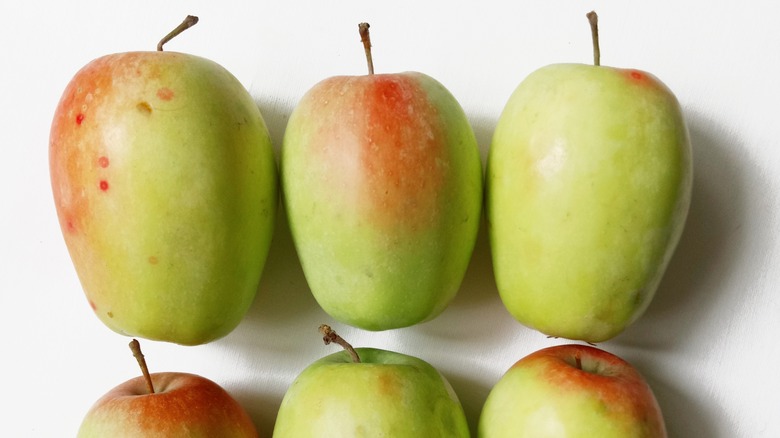Kandil Sinap: The Unusually-Shaped Apple That Originated In Crimea
Apples are among the most widely-recognized foods in the world, ranking as the third-most cultivated fruit in the world trailing only the ubiquitous banana and watermelon. Statista reports that 86.44 million metric tons of apples were produced in 2020, and just think how many doctors that could keep away. Unfortunately, this massive number still fails to reflect the full diversity of the apple species.
The University of Illinois notes that there are roughly 7,500 varieties of apples in the world, but only a select few are grown commercially. In the U.S. alone, there are around 2,500 apple varieties, but only 100 are commercially farmed. It turns out there's a vast world of apples out there that most of us have only scratched the surface of. We don't mean to talk down on popular apple varieties like the Red Delicious, Granny Smith, and Fuji — they are delicious and more than worthy of our affection, but it's worth highlighting some lesser-known options.
There is tremendous diversity among apples, thanks to a trait botanists call "extreme heterozygosity." As National Geographic explains, this refers to apples' tendency to genetically mutate at random, creating thousands of variations in size, shape, color, texture, and flavor. Consider the little-known Arkansas Black Apple, with its dark peel and flesh so tough it must age for months to become edible. Or explore some international variants, of which none could be more distinct than the Kandil Sinap.
What is a Kandil Sinap?
You can easily identify a Kandil Sinap apple with a single glance, as it looks like no other. Its green-red color mixture is unremarkable, no different than a Pink Lady, but its tall and slender shape is unforgettable. The Salt Spring Apple Company describes it as "an otherwise average-looking apple on an extreme diet." Specialty Produce describes it as a crunchy and particularly juicy variety with a sugary aroma and a flavor that balances sweet and sour. This one-of-a-kind fruit traces its origins to the Black Sea region and is believed to have sprung from a natural mutation.
Specialty Produce notes that there is an ongoing debate over whether the first Kandil Sinaps came from Turkey or Ukraine's Crimean Peninsula. Regardless of the exact origin, it was most widely cultivated by Crimean Tatars in the 1700s. Unfortunately, Crimea's turbulent history in the last century has greatly reduced the availability of Kandil Sinap apples. In 1944, the Stalin regime exiled roughly 180,000 Tatars from Crimea (via the Ukrainian Institute of America). No group of people had played a bigger role in cultivating Kandil Sinap apples, and in an instant, they were gone. Specialty produce notes that the subsequent spread of faster-growing European apple varieties soon supplanted the Kandil Sinap, turning this once-common fruit into a rare specialty.

